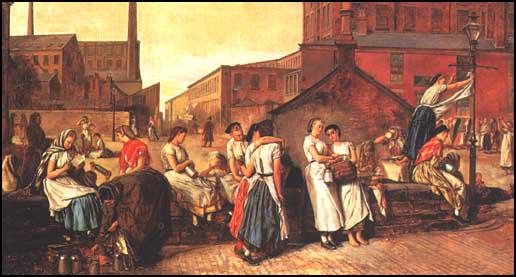Factory Act Victorian Age, Victorian Era Wikipedia
Factory act victorian age Indeed recently has been sought by consumers around us, maybe one of you. People now are accustomed to using the net in gadgets to view image and video information for inspiration, and according to the title of this post I will discuss about Factory Act Victorian Age.
- Child Labour The British Library
- Social Political And Economic Characteristics Of Victorian Britain From Crossref It Info
- Victorian Era Wikipedia
- Victorian Era Culture Art Timeline History History
- Child Labour The British Library
- The Victorian Age Ppt Video Online Download
Find, Read, And Discover Factory Act Victorian Age, Such Us:
- Sadler Report Wikipedia
- Life Of A Chimney Sweep Working Conditions For Children In The Victorian Era
- Work Related Health Then And Now Croner I
- Factory Acts Wikipedia
- Victorian Age
If you re searching for One Piece Indonesia Reference you've reached the right location. We have 104 images about one piece indonesia reference including pictures, photos, photographs, backgrounds, and much more. In such web page, we additionally have variety of images out there. Such as png, jpg, animated gifs, pic art, logo, black and white, translucent, etc.
The numerous factory acts passed throughout the victorian period gradually improved conditions for factory workers.

One piece indonesia reference. The factory acts were a series of acts passed by the parliament of the united kingdom to regulate the conditions of industrial employment. Factory acts of 1833 1844 and 1847 made it illegal to employ children under the age of nine. This was the third factory act its predecessor being the 1801 health and morals of apprentices act and the 1819 factory act.
In 1833 parliament passed a new factory act. Hobhouses act forbade night work for persons under the age of 21. 1831 hobhouse factory act.
The early acts concentrated on regulating the hours of work and moral welfare of young children employed in cotton mills but were effectively unenforced until the act of 1833 established a professional factory inspectorate. In 1847 the ten hours act. No child workers under nine years of age.
The practicalities of running a textile mill were such that the act should have effectively set the same limit on the working hours of adult male mill workers but defective drafting meant. In 1832 the factory act stopped children under the age of 9 working. This piece of legislation was the first effective factory act to be passed.
In 1833 the government passed a factory act to improve conditions for children working in factories. Two pieces of factory legislation had been passed earlier. The basic act was as follows.
In 1842 the mines act stopped women girls and boys under 10 working below ground in mines. No children were to work in factories under the age of nine though by this stage numbers were few. The 1802 health and morals of apprentices act and the 1819 cotton mills act but neither of them had had much effectno person under eighteen years of age shall work between half past eight in the evening and half past five in the morning in any cotton.
The factory act of 1847 also known as the ten hours act was a united kingdom act of parliament which restricted the working hours of women and young persons 13 18 in textile mills to 10 hours per day. Young children were working very long hours in workplaces where conditions were often terrible. They particularly focused on limiting the number of hours children were legally allowed to work.
Victorian era factories during industrial revolution living conditions child labour machinery one of the major reasons that brought change in the victorian england was the i ndustrial revolution during the 1800s which led to the emergence of numerous factories.
The Social Class System Of The Victorian Era 1833 1901 Create Webquest One Piece Indonesia Reference
More From One Piece Indonesia Reference
- Footballpremierleaguearsenaltransfernews
- Methodology Of Musical Instrument Jaltarang
- Banjo Musical Instrument Price In India
- Kit Festa Dinossauro Para Imprimir Gratis
- Macchina Barbie 4 Posti
Incoming Search Terms:
- Factory Workers In The Victorian Era Why Did Children Work In Factories In The Victorian Era What Was The Job Of A Piecer Fun Kids The Uk S Children S Radio Station Macchina Barbie 4 Posti,
- Victorian Era Culture Art Timeline History History Macchina Barbie 4 Posti,
- Child Labour The British Library Macchina Barbie 4 Posti,
- How To Summarize Britain S Factory Acts Macchina Barbie 4 Posti,
- General Overview Of The Victorian Era And Timeline Macchina Barbie 4 Posti,
- Victorian Children In Factories Macchina Barbie 4 Posti,